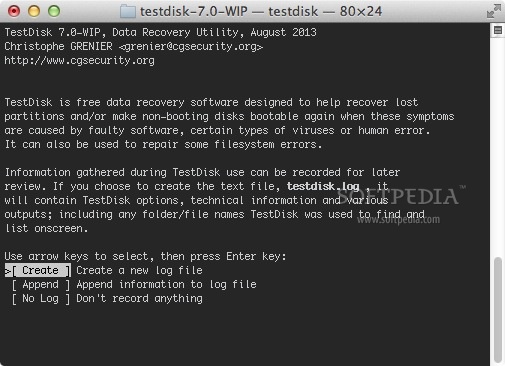

If everything worked, you should now be able to boot into your drive as before and your data should be visible as normal. If your partition isn't found, select Deeper Search and wait for it to find your partitionĪssuming you only had the one Mac partition on the drive, use the arrow keys to toggle the found partition from D (deleted) to * (bootable)Ĭontinue to the next screen and Write the new partition table to the drive Select Quick search and wait for it to find your partition Once it's loaded, select your drive (prefer the /dev/rdisk option if it's available)Ĭonfirm that testdisk detected the drive's partition type correctly (more than likely it will be Intel)

Install testdisk to a bootable USB and run it How to use TestDisk to recover your partition This means that the vast majority of your data is still there, even if you've deleted the partitions that make them visible. That had been previously applied to the disk. If the ALL parameter is not used, the first 1MBĪnd the last 1MB of the disk are zeroed. (GPT) disks, the GPT partitioning information, including the Protective The main difference between the two applications is that TestDisk specializes in restoring lost or deleted disk partitions and repairing bootable disks, while PhotoRec is designed mainly for restoring specific individual files.

Luckily for you you ran clean on its own, which only wipes the first and last MB of your drive: On master boot record (MBR) disks, only the MBR partitioning informationĪnd hidden sector information are overwritten. TestDisk is a free and open-source data recovery tool that’s quite similar to PhotoRec. Don't touch the drive - don't save anything to it, don't create any files on it, don't even open any files on it.


 0 kommentar(er)
0 kommentar(er)
